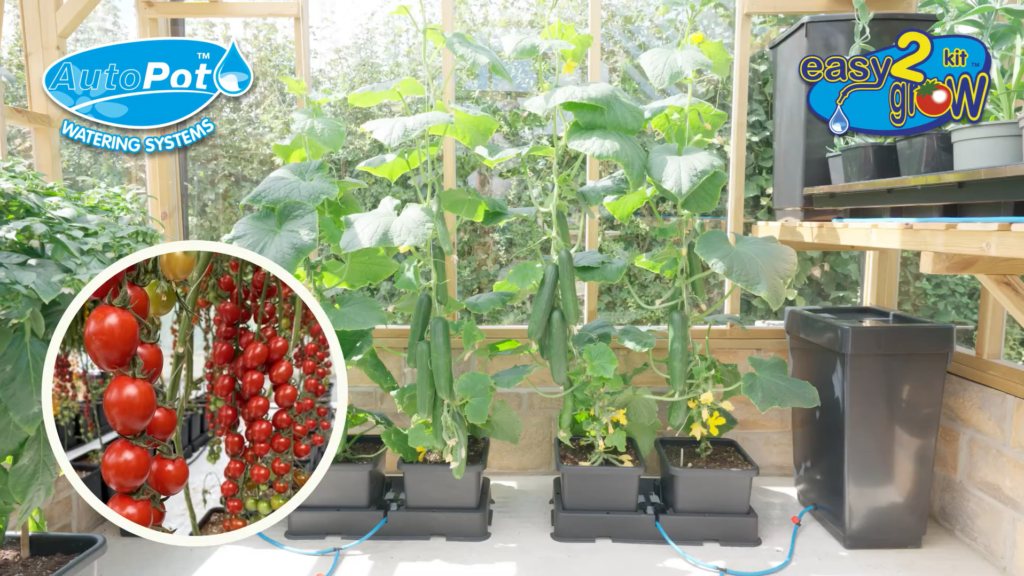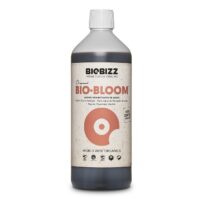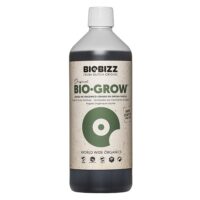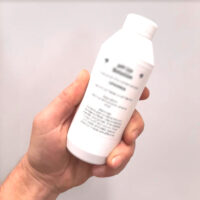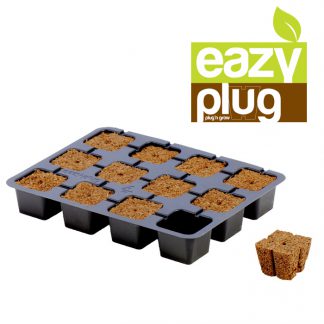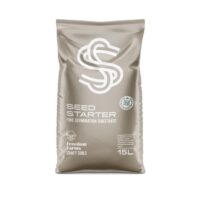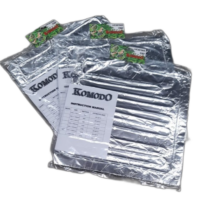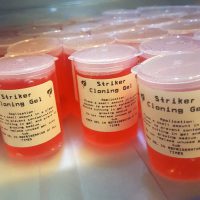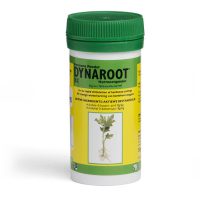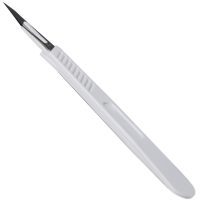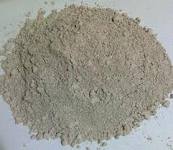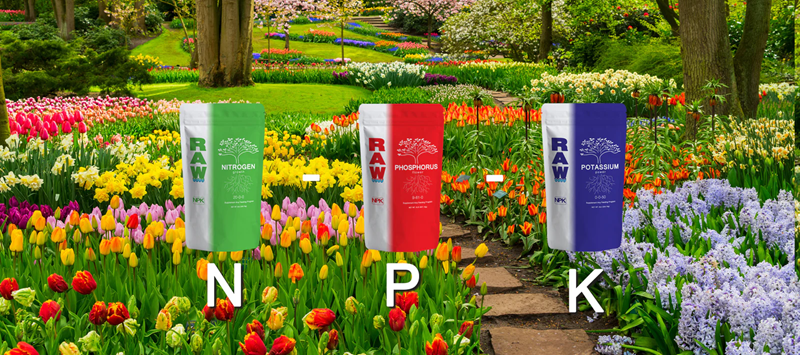Tony Hinde provided this quick introduction into how hydroponics works, all aspects around growing plants from seed or seedling in a hydroponic system and common problems encountered.
HOW PLANTS GROW
We need to know how plants grow in soil in order to understand how hydroponics differs from soil. A plant has three main parts, namely the root system, the stem and the leaves. The root system anchors the plant in the soil and takes up water and nutrients from the soil.
The soil itself consists of 5% organic matter, which is plant remains and animal residues. These are broken down by bacteria to form humus, This mixture increases the water-holding capacity of the soil and fixes inorganic plant nutrients as well as being a source of nitrogen. The inorganic part of the soil, comprising 45% by volume, is made up of minerals released from broken-down rock particles, mainly sand and clay. This provides the chemical nutrients for plants. The remaining 50% of soil is made up in equal parts of water and air.
Air is essential for the supply of oxygen to the roots of a plant. The stem connects the roots and the leaves. It is responsible for getting water and nutrients from the roots to the leaves. The leaves, in the sunlight, turn carbon dioxide and water from the atmosphere into chlorophyll. This is the green substance which is the source of energy to help the plant grow. Another function of the leaves is to act as an air-conditioner to cool the plant on a hot day. Now we come to the common denominator between growing in soil and hydroponics, which is the availability of mineral elements. These are absorbed by the plant from the soil (or nutrient solution in hydroponics) and are essential for the growth of the plant.
There are six major elements and six trace elements. The major elements are nitrogen, phosphorus, potassium, calcium, magnesium and sulphur. The trace elements are iron, mangenese, boron, copper, zinc and molybdenum. There are other trace elements, but they do not have any effect on plant growth. We don’t want to frighten you with too much science, but it is important that you have the basics. An interesting fact is that the mineral elements mentioned above form only about 2% by weight of a tomato fruit, with 95% made up of water!
NUTRIENTS
You don’t have to worry about making up a nutrient solution of the major and trace elements, as there are ready-made mixtures on the market. We use a two-part nutrient, which, though a bit more trouble than single-part nutrients to mix, has given superior results without the sedimentation experienced with the single-part mixtures. A new solution should be made up once a week, throwing the old solution away into your garden. During the week top up the reservoir with plain water to replace any transpiration losses.
If you want to be more scientific, you can use an EC meter. This measures the total concentration of nutrients in the solution. There comes a time when your plants do not seem to be very happy, turning yellow or brown for no apparent reason. This may be caused by a deficiency in one of the mineral elements. While this may seem to be a contradiction if you are using a ready-made solution as mentioned above, in fact it isn’t, as plants may need more of a particular element at different times in their growth cycle. Although the different nutrient deficiency symptoms may look the same, there are small differences in each problem. It is by observation that the cause may be isolated.
-
 BioBizz Bio-BloomR160.00 – R3 885.00
BioBizz Bio-BloomR160.00 – R3 885.00 -
 BioBizz Fish-MixR150.00 – R3 570.00
BioBizz Fish-MixR150.00 – R3 570.00 -
 BioBizz GrowR150.00 – R3 570.00
BioBizz GrowR150.00 – R3 570.00
The following should be of help in this task:
Nitrogen
Small, stunted plants with very large root systems; leaves smaller and lighter in colour than normal; slow growth. Paleness will start at the tips of the lower leaves. If this deficiency continues, the foliage will continue to develop, but stems will be spindly, sappy and soft, flowering will be delayed, small fruit will grow and the plant will become more susceptible to disease.
Phosphorus
Stunted plants with dark, dull and sometimes discoloured leaves, unusually hard stems, poor root system and very little branching. Attacks lower, more mature leaves first. Occurs especially when nitrogen level is low.
Potassium
In early stages, yellowing and curling of older leaves. Newer leaves will begin to droop. Older leaves then become blotchy and scorched. Flowers are lacklustre and stems are soft. The plant will be more susceptible to diseases such as mildew and rust.
Calcium
Underdeveloped roots are the first to be affected. Younger leaves will be immobile and their edges will curl. Plants will be stunted and have dark crinkly leaves. (See blossom end rot under diseases.)
Magnesium
Symptoms do not appear until the deficiency is well established. The plant will be stunted. Leaf veins will stay green while the remainder of the leaf turns yellow. Brown spots will appear and then the plant will dry out. Flowers will be slow to develop, if at all. Flowers that do grow will be lack lustre.
Sulphur
Resembles nitrogen deficiency in many ways. Iron Tips of new leaves will become either pale or yellow, and this will spread inward. The leaf will likely turn blotchy from a lack of green pigment, eventually turning brown and drying out. Manganese Poor blooming, weak growth. Leaves may turn yellow or blotchy.
Boron
Brittle stems and immobile new leaves with brown tips.
Zinc
Growth will be stunted. You may never encounter any of these imbalance problems, but it is as well to be aware of them. If they do occur, one of the ways to remedy the situation is to give the plant a foliar feed of nutrient solution, using a very fine spray.
HYDROPONICS AND pH
Before your eyes glaze over with all this science, it is necessary to have a working knowledge of pH. Although it sounds fearful, it is simply the relative acidity or alkilinity of a solution. In hydroponics we are interested in determining the pH level of water before nutrient is added to it, making adjustments if necessary, and then checking the pH level of the nutrient solution from time to time.
If we take a scale of 1 to 14, the centre point, or neutral position, is 7. Everything above neutral is alkaline and everything below is acid. To determine accurate pH levels, each whole number is divided into ten parts. Thus we have 6.8, 6.9, 7.0, 7.1, 7.2 and so on. When growing several kinds of vegetables or herbs in one unit, you will probably do best in the slightly acidic range of 5.6 to 6.5, as it is within this range that the nutrients are most available to the plants. To illustrate this, at 7.0, which is outside the most suitable range for vegetables, they will take up nitrogen, phosphorus and potassium, but only half of the trace elements such as iron, manganese, boron, copper zinc and molybdenum. So if the pH is above 7.0, look out for trace element problems, rather than those caused by lack of major elements.
-
 pH Testing KitR85.00
pH Testing KitR85.00 -
 Liquid pH UpR20.00 – R230.00
Liquid pH UpR20.00 – R230.00 -
 Liquid pH DownR55.00 – R700.00
Liquid pH DownR55.00 – R700.00
There are two simple methods of determining pH level, namely litmus paper or pH indicator solution. It is unlikely that the pH of your water supply will fluctuate, but if it does, a check of the pH level every two or three days may be necessary; otherwise, once a week should be enough. Many areas have a water pH of 7.0 to 8.2. Your nutrient powder will probably affect this, bringing it down close to the desired 5.6 to 6.5. If you change your nutrient solution regularly, say every week, pH shouldn’t be a problem. The other factors which may affect pH are the hardness of the water, which can be ascertained by getting an analysis from your local council, climate, what plants you are growing and how much nutrient each plant uses.
However, having said that, it is not necessary to get in a lather over pH, as you will still get decent crops! It is just interesting to experiment with different conditions. If your pH is too alkaline, add pH Down Nitric or pH Down acid. The amount to be used should measured in single drops only! Check the pH level every eight hours. If your pH is too acidic, add pH Up to your solution.
Certain vegetables have specific preferences. For example, lettuces like 6.0 to 7.0 and tomatoes prefer 5.5 to 7.5. When growing combinations of vegetables, a good pH range is 5.6 to 6.5. For Herbs only it is 5.6 to 7.0. If you are growing vegetables and herbs together try to maintain a pH of 6.0 to 6.5. Have a look at this chart for detailed information on the correct pH/EC/ppm for a variety of plants grown using hydroponics.
GROWING PLANTS
-
 EazyPlug PlugsR60.00 – R95.00
EazyPlug PlugsR60.00 – R95.00
Now we come to the interesting part of hydroponics. You can grow almost anything in your unit; flowers for cutting, house plants for decoration, or vegetables and herbs to improve your meals. The only limitation is that root vegetables, such as potatoes and carrots need a different hydroponic system and will not have enough space in your unit. But it could also be argued that these vegetables do not suffer from long storage as much as vegetables like tomatoes, lettuce and green peppers, which thrive in your unit. So start with these and then experiment to your heart’s content as you go. We will discuss growing of specific plants later; the comments here apply to any plant you want to grow.
SEEDS
When you select seeds for raising, bear in mind that commercial seed varieties have been bred for toughness and long shelf life in the supermarket at the expense of fragrance and flavour, so ask for seed varieties suited to home growing. For instance, you might like to grow a bush tomato instead of the vine type, which may grow too high! Leaf lettuce will yield a high volume of leaves in a few weeks, while head lettuce takes a bit longer. If you choose a head lettuce, such as “Great Lakes”, treat it like a leaf lettuce and simply pick the leaves for your salads. Don’t be afraid to experiment with hydroponics; use any seed that interests you.
You can plants seeds directly into your hydropopnic unit or, by using the growing medium supplied with your unit, which is equal parts of vermiculite and perlite, put them into seed trays from local nursery. You can soak the seek overnight in water for faster germination. Plant two seeds where you want one plant. If both come up, snip off the smaller one with scissors. Push your seeds gently into the growing medium no deeper than 1.5cm. Most seeds germinate best in darkness, warmth and moisture. Thus, you can cover your seeds with dark plastic sheet or use a humidity dome with a heating pad. For those seeds that germinate best in light, such as certain herbs, use clear plastic. Check every day for results. As soon as the first sprouts poke through the medium, take the cover off to let air and light get to the seedlings. Failure to remove the cover soon enough will make the seedlings “bolt” (grow long and spindly). If that happens you might as well pull them out and start again!
-
 Freedom Farms SeedstarterR140.00
Freedom Farms SeedstarterR140.00 -
 Heating PadR180.00
Heating PadR180.00
If you have different seeds in the same tray, some may germinate faster than others. Just fold or cut the cover as needed. Some seeds come up fast (basil, cucumbers); others are quite slow (parsley, peppers). Identify what you have sown with plant markers. Use a waterproof felt pen or pencil so that the writing won’t wash off. If your seeds don’t sprout, there are five possible reasons:
– The seed tray is too cold for them (less than 13 degrees Centigrade).
– You have bought old seed that is no longer fertile. Check the “sell-by” date on the package.
– Your seeds were not treated for fungus resistance and have been eaten by the fungus. You’ve put your seeds under the germination cover, placed them in the hot sun and cooked them. Keep the tray out of direct sunlight.
– The seeds have come from sterile hybrids. This might happen if you saved seed, e.g. tomato, from a fruit that you bought at the supermarket.
SEEDLINGS
If you have grown seeds in the hydroponic growing medium in a seed tray, all you have to do is transfer them, with the growing medium clinging to their roots, to the unit. There should be no shock, drooping or wilting. They will just continue growing! When you insert the seedling into the growing pot, don’t be afraid to put the roots and the stem up to the first set of leaves into the pot. Ideally, the roots should just protrude into the nutrient channel. If you have been impatient to get started and bought seedlings in soil from your local nursery, that is O.K!
You will have to wash the roots gently to remove the soil. Use cold water running steadily from a tap. The water will help to loosen the soil and the coldness will have an anaesthetising effect on the plant to minimise the shock. Then feed the roots into the growpot so that they stick out of the bottom of the pot. Place one hand under the pot and with the other hand put in the dry mixture by holding the pot under a gently-running tap. The mixture will not now come out of the bottom of the pot. Be warned that there may be some wilting or drooping initially and some plants may even lose some leaves, but you will see the new growth will appear within a few days. Whether you have used hydroponically raised seedlings or those raised in soil, be gentle with the roots.
CUTTINGS
Any plants that will normally root from cuttings can be placed directly into your growing pots. To make the cutting, use a sterile scalpel blade and cut a section of the plant that has at least 3 internodes diagonally down. Clean the leaves from the last 50mm of the stem and coat with a rooting hormone and place in your growing medium.
-
 Striker Cloning GelR50.00 – R550.00
Striker Cloning GelR50.00 – R550.00 -
 Dynaroot rooting hormone powderR65.00
Dynaroot rooting hormone powderR65.00 -
 Surgical ScalpelsR2.00 – R75.00
Surgical ScalpelsR2.00 – R75.00
GROWING VEGETABLES
If you want to use your unit as a hobby, plant whatever interests you and don’t be afraid to experiment. If you want to grow crops for your table it may be advisable to stick to salad vegetables. Notes on a few of the more popular vegetable crops and their requirement follows:
Cucumbers
If you don’t wish to cross-pollinate, plant the English or seedless variety. They like hot weather and direct sunlight and are sometimes susceptible to mildew. They can be trained upwards and then laterally, using twine as a support. The crop then hangs downwards.
Lettuce
Grow either the heading variety, such as “Great Lakes”, or a leaf lettuce or “cos” lettuce. Although it is a cool weather crop, it can be grown throughout the year if shade is used during the summer months. It prefers a temperature of between 13 and 24 degrees Centigrade.Germination takes about 10 days and you should have leaves to harvest in six to eight weeks. If you want a continuous supply of lettuce, you should stagger planting.
Tomato
This is a most popular and rewarding plant to grow. It loves the sun and prefers a temperature range of 21 to 27 degrees Centigrade. When the plant has two pairs of leaves in addition to the seed leaves, it can be transplanted from the seed tray into the unit. At this stage you should make arrangements for supporting the plant. We have used twine, attached to the shade support quite successfully. You should get a crop about 12 weeks from planting seed. Experiment with different varieties. The small cocktail varieties are particularly sweet. It should be remembered that certain plants either like or dislike growing in close proximity, so it is as well to keep “friends” together and “enemies” apart. Examples of “friends” are tomatoes and parsley or lettuce and cucumber. However, tomatoes do not like cabbages, but it is highly unlikely that you will be growing those at the same time anyway! Cucumbers and sage should be kept apart. When growing combinations of vegetables, the pH should be 5.6 to 6.5.
GROWING FLOWERS
Flowers are very rewarding in any garden, and no less so in your unit. The carnation is always a favourite. It likes a pH of 6.0 to 6.5, but requires a fair amount of attention to be successful. Antirrhinums or Snapdragons will grow for many months of the year at a pH of 6.0. Experiment with Sweet Peas, Marigolds, Zinnias and anything else that takes your fancy. Just remember that flowers also have “friends” and “enemies”. These can be found in any good gardening book.
GROWING HERBS
There is nothing more satisfying than being able to enliven your cooking with fresh herbs. The main herbs for cooking include Basil, Marjoram, Sage, Parsley, Oregano and Thyme. The difference between using dried and fresh herbs is unbelievable! Herbs can be grown from seed, or you can obtain cutting from friends. Their pH requirements vary, but not markedly. For example, parsley grows best from 5.0 to 7.0, while thyme prefers a pH of between 5.5 and 7.0. A good range for herbs only is 5.6 to 7.0. If you are growing vegetables and herbs together, aim for between 6.0 and 6.5. Quite apart from the culinary uses, herbs are known for their medicinal properties, but that is another topic altogether!
GENERAL HINTS
Housekeeping
The pump should be cleaned at least weekly. The impeller can be accessed by pulling off the front of the pump, Do a daily check to see that the 5mm feeder pipes are clear and that the flow in the gullies is in contact with the roots of the plants, not wandering all over the place! The initial setting of the pump is 300l/h. You can increase this as the plants grow, and if you feel that the flow is insufficient. As a rule of thumb, the flow should be about 1-2 litres per minute. Keep your unit and its plants clean. Remove dead leaves before they rot, to avoid any fungal infection.
Pests
Watch out for insects, such as red spider mite and aphids. You can use commercial insecticides, but if you don’t like using them, a general organic spray that you can make yourself is as follows: Chop 90 grams of garlic cloves in a grinder or blender and soak for 24 hour in 2 tablespoons of mineral oil. Dissolve 15 grams of oil-based soap in 500ml of water and add to the garlic mixture. Stir well and use in your hand sprayer. Alternatively, there is a natural insecticide called “Neem”, which is derived from the Indian neem tree.
-
 Margaret Roberts Organic InsecticideR140.00 – R285.00
Margaret Roberts Organic InsecticideR140.00 – R285.00 -
 Biogrow BioneemR140.00 – R10 600.00
Biogrow BioneemR140.00 – R10 600.00 -
 Diatomaceous EarthR35.00
Diatomaceous EarthR35.00
Record-keeping
Although you may not like the idea, it is worthwhile to keep a log of your day to day activities (hydroponically speaking of course). Record the pH when checked, when you changed the nutrient solution, the weather and light conditions, when seeds were planted, when they germinated, when they were transplanted, when they, start fruiting, when and how much you harvested. Anything that will add to your knowledge later can be noted. If you have problems, this may help you find solutions.
TROUBLE-SHOOTING
This section is intended to give you some idea of what to do if your plants do not seem to be as healthy as they could be. The problem with such a section is rather like reading a medical book containing symptoms of various diseases; you seem to have them all!
Bolting of lettuce
Lettuce is a cool weather crop and will bolt if it is too hot or if it doesn’t get enough light from germination to maturity. Give it plenty of light early on, but keep in a cool shady place after partial maturity. Use 40% shade cloth.
Damping off
This disease is also called root rot, although damping off applies more to seeds and root rot to plants. It is a fungus disease caused by a variety of fungi. It strikes seeds, which will turn mildewy and fail to grow. It may be due to the fact that your unit is in a place that keeps it too damp, dark and cool. In plants, the roots turn brown and rot. One answer is an all-purpose fungicide.
Drooping leaves
Check to see that your plants are getting enough water. Check that the pump is operating correctly. If these are all right it is possible that your nutrient concentration is too high. Flush the system and run on plain water for a couple of days, then use the nutrient again. Make sure that there is a good circulation of air around the unit and that it is not too hot.
Limp Lettuce
When they are grown in the sun, lettuce leaves are sometimes too limp to serve. They will crisp up nicely for your salad if you wash them in cold water, shake gently and put them in a plastic bag in the refrigerator for an hour before using.
Overfeeding
This is a common mistake, and burns the plants. It is safer to run nutrient on the lean side. If the plants get too little nutrient, you will know they need more because the veins of their leaves will turn yellow or pale. Just add a pinch of nutrient powder and they’ll turn green again almost overnight.
Rain overflow
If a heavy shower should cause your reservoir to overflow, it is best to throw away the solution and prepare a fresh one. Light rain will have little effect on the solution.
Spindly growth
This is caused by insufficient light.
Sunburn
White, bleached-looking patches appear on the leaves. Plants such as tomatoes and cucumbers need a 30% shade cloth, while lettuces do best with 40% shade cloth. Tip burn The tips or margins turn brown. This is caused by overfeeding. Flush the system and make up a new batch of nutrient solution.
Yellow leaves
When a vegetables is nearing the end of its fruitful life, its older leaves will usually turn yellow and die. This is normal. When younger leaves yellow or turn a distinctly lighter green than older leaves, try adding a pinch of nutrient. Wait a few days and they’ll turn green again. If not, add a little more.
More information about hydroponics:
Wikipedia entry for Hydroponics
We have a more in depth look at hydroponics, which is available from this site as an E-book.


